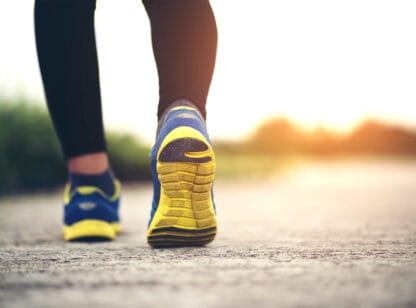The development of an endurance training program involves different variables that need to be accounted for to maximize performance. Maximizing performance is the number one goal of all training programs.
Training used to consist of high intensity interval training most days of the week. Arthur Lydiard, the running coach for the New Zealand distance runners, believed in a high-volume base period to increase aerobic capacity at the beginning of an athlete’s training cycle. This was a change to the traditional training schedule. Endurance training has built on this premise and continues to evolve.
There are two major measurements of an athlete’s endurance capacity that training programs build on for improvement. The first is VO2max, the maximum oxygen uptake or the maximum volume of oxygen that can be utilized in one minute during maximal exercise. It is generally considered the best indicator of cardiorespiratory endurance and aerobic fitness.
VO2max is affected by oxygen availability and its transfer and usage in the cell. Oxygen is transported from the lungs to the mitochondria. The more efficient the process the faster the transfer of oxygen to the lungs, stroke volume and capillary density in the muscle.
Elite athletes have extremely high VO2max capacity. Lactate threshold determines and distinguishes fitness levels. Lactate threshold is the exercise intensity at which lactate starts to accumulate. Lactate is produced when the body cannot produce enough ATP energy through aerobic metabolism, so it starts producing more energy anaerobically, producing lactate as a byproduct.
As lactate is moved back to the muscle to produce ATP molecules the athlete’s threshold is reached when the lactate is produced faster than it can be metabolized.
UC Berkeley physiologist George Brooks has found that training actually teaches muscle cells how to use lactic acid as a fuel to train and perform harder. As the training becomes efficient and harder, the mitochondria grow, taking in more lactate and burning it for more energy.
While high intensity training maximizes VO2max and lactate threshold there are other factors that affect performance. Fatigue and recovery are a result of building endurance to a higher level. Overtraining inhibits the rebuilding process and requires a lengthy recovery. The 80/20 model is one way of rebuilding. Train 80% in zone 1 or below a ventilator threshold, which is a long slow run. Train 20% at zone 2 at the lactate threshold and zone 3 above the threshold, which is at race-specific intervals.
Keep in mind that every athlete and runner differs in reaction to specific workouts and their ability to recover. Constant reevaluation of the program is necessary to customize the training program based on the athlete’s physical and mental capacity.
Dr. Wilson is a Doctor of Physical Therapy at Avid Physical Therapy. He was a Division 1 cross country and track runner at the University of Miami and received his United States Track and Field Coaching Certificate. Dr. Wilson can be reached at [email protected]
Source: 1) University of California – Berkeley. “Lactic Acid Not Athlete’s Poison, But an Energy Source – If You Know How to Use It.” ScienceDaily, 21 April 2006










































Comments (0)